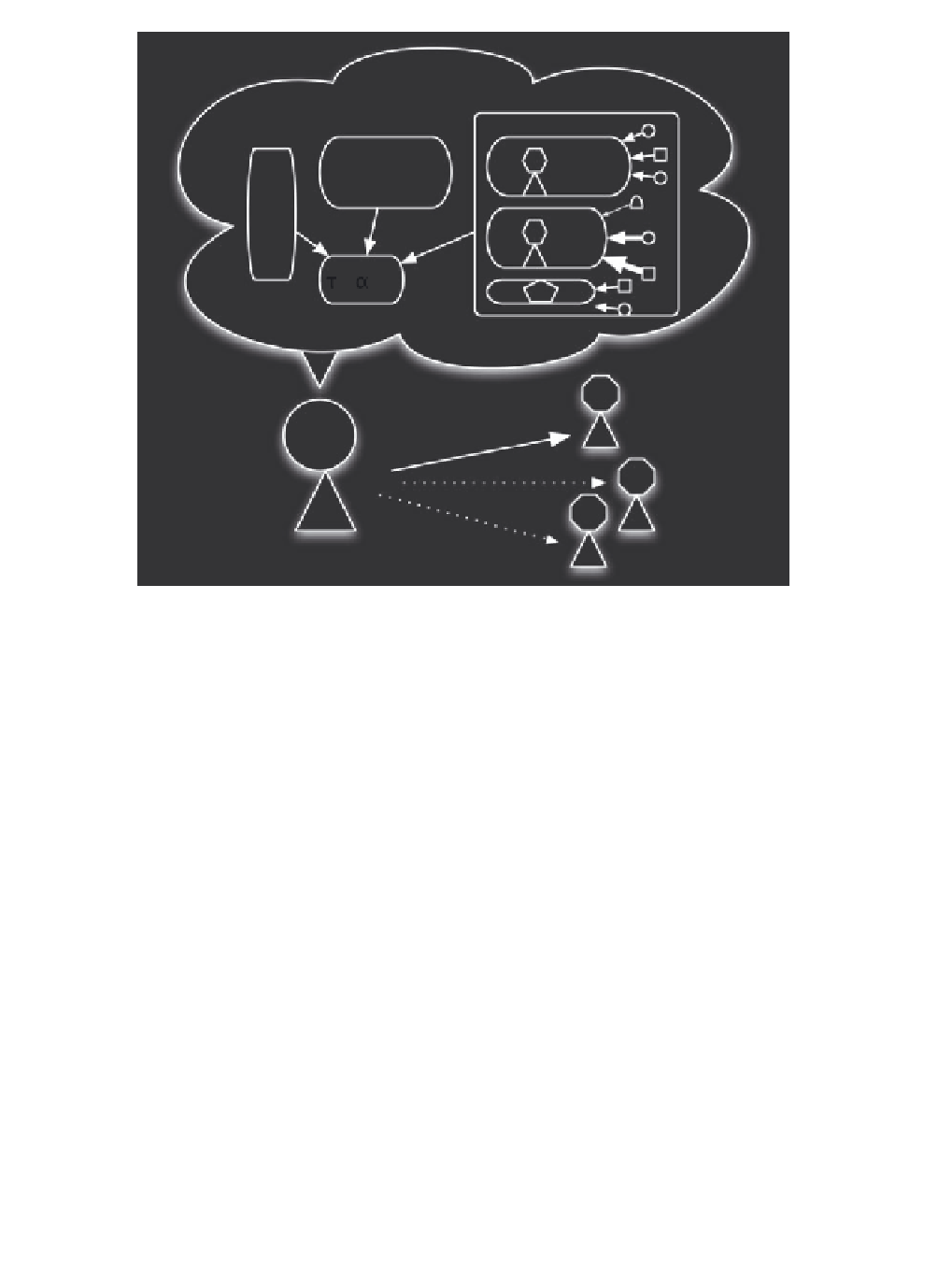Information Technology Reference
In-Depth Information
X's BELIEF
trustee
applies
X's BELIEF
X's GOAL
g
X
>
Will
will
Abi
in
>
g'
X
ab
context C
.
.
>
Will
Abi
will
>
g
n
X
ab
=(
,p)
W
X Delegates to ?
Y
X
Z
W
Figure 6.20
X
's Mental Ingredients for Delegating a task (considering other potential trustees, and
different goals)
our model is the main network (the
dependence network
in our terms), that is falling, not only
the (also very but less important) trust network (see also section 6.7.1).
6.8 Concluding Remarks
Strategies and devices for trust building should take into account the fact that social trust is
a very dynamic phenomenon both in the mind of the agents and in society; not only because
it evolves in time and has a history, that is
A
's trust in
B
depends on
A
's previous experience
and learning with
B
itself or with other (similar) entities. We have in fact explained how
trust
is influenced by trust
in several rather complex ways. In particular we have discussed three
crucial aspects of such a dynamics and we have characterized some mechanism responsible
for it and some preliminary formalization of it. We have modelled:
a)
How A's trusting B and relying on it in situation
can actually (objectively) influence B's
trustworthiness in
. Either trust is a self-fulfilling prophecy that modifies the probability
of the predicted event; or it is a self-defeating strategy by negatively influencing the events.
Both
B
's ability (for example through
B
's increased self-confidence) and
B
's willingness
and disposition can be affected by
A
's trust or distrust and delegation.
B
can for example







Search WWH ::

Custom Search